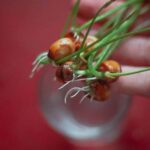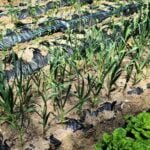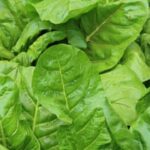Are you interested in growing your own vegetables but don’t have the space for a traditional garden? Pots for vegetable gardening may be the perfect solution for you.
Container gardening allows you to grow a variety of vegetables, herbs, and fruits in limited spaces, such as patios, balconies, or small yards. In this article, we will explore the benefits of using pots for vegetable gardening, different types of pots suitable for vegetable plants, tips for proper drainage and watering, the best vegetables to grow in pots, maintenance and care for vegetable plants in pots, and creative ideas for arranging pots in a vegetable garden setting.
Container gardening offers numerous benefits for those who want to grow their own produce. It provides flexibility and convenience as you can easily move your pots around to follow the sun or protect your plants from harsh weather conditions. It also reduces the risk of soil-borne diseases and pests that are commonly found in traditional gardens. Additionally, container gardening allows individuals with limited mobility or space constraints to enjoy the rewards of growing their own vegetables.
When it comes to choosing the right pots for vegetable gardening, there are various types available on the market. From traditional clay pots to modern plastic containers, each type has its own advantages and disadvantages. In the following sections, we will discuss the types of pots suitable for vegetable plants as well as tips for selecting the right size and material based on your specific needs and preferences.
Benefits of Using Pots for Vegetable Gardening
Container gardening offers a convenient and versatile way to grow vegetables, especially for those with limited outdoor space or poor soil quality. There are several benefits to using pots for vegetable gardening, making it an attractive option for many individuals.
Firstly, using pots for vegetable gardening allows for better control over the growing environment. With pots, gardeners can easily regulate the type and quality of soil used, ensuring that their plants receive the necessary nutrients for healthy growth. Additionally, containers provide the flexibility to move plants to optimal locations based on sunlight and weather conditions.
Furthermore, pots offer a solution to common gardening challenges such as pests and diseases. By keeping vegetables in containers, gardeners can minimize the risk of infestations and easily spot any issues that arise. This can lead to healthier plants and higher yields compared to traditional in-ground gardening.
Another benefit of using pots for vegetable gardening is the ability to extend the growing season. Pots can be moved indoors during colder weather or positioned strategically to capture more sunlight as needed. This adaptability makes it possible to grow a wider variety of vegetables throughout the year, regardless of climate limitations.
- Less chance of weed growth
- Easier maintenance and pest control
- Ability to extend growing seasons
- Selecting suitable materials such as clay, plastic, or wood
- Choosing adequate drainage options
- Determining appropriate sizes based on plant types
Types of Pots Suitable for Vegetable Plants
When it comes to vegetable gardening, the type of pots you choose can greatly impact the success of your plants. There are several options available, each with its own advantages and considerations. One popular choice is terracotta pots, which are porous and allow for good air circulation to the roots of the plants. These pots also provide some insulation against temperature fluctuations. However, they can dry out quickly and may not be the best choice for hot climates.
Another option is plastic pots, which are lightweight and affordable. They retain moisture well and are durable, but may not provide as much insulation as terracotta. Fabric pots have become increasingly popular due to their excellent drainage and aeration properties, which can promote healthier root systems for vegetable plants. They are also easy to store during the off-season.
For those interested in sustainability, biodegradable pots made from materials such as coconut coir or rice hulls offer an eco-friendly option that can be planted directly into the ground when it’s time to transplant your vegetables. It’s important to consider factors such as water retention, insulation, and sustainability when choosing the right type of pot for your vegetable garden.
Ultimately, the type of pot you choose will depend on your specific gardening needs, climate, and personal preferences. Whether you opt for terracotta, plastic, fabric, or biodegradable pots for vegetable gardening, each type has its own unique benefits that can contribute to a successful and bountiful harvest.
Choosing the Right Size and Material for Vegetable Plant Pots
When it comes to choosing the right size and material for pots for vegetable gardening, there are a few key considerations to keep in mind. The size of the pot will directly impact the growth and health of your vegetable plants, while the material will affect factors such as water retention and temperature control.
Size of Pots
The size of the pot is crucial for the proper growth of your vegetable plants. In general, larger pots are better for vegetables with extensive root systems, such as tomatoes and peppers, as they provide more room for root development and allow for better water retention.
On the other hand, smaller pots can be suitable for smaller vegetables like lettuce or herbs. It is important to consider the mature size of your vegetable plants when choosing pot sizes to ensure they have enough space to thrive.
Material of Pots
The material of the pot can also play a role in the growth and health of your vegetable plants. Clay pots are popular for their breathability and ability to absorb excess moisture, but they can also dry out quickly and require more frequent watering. Plastic pots, on the other hand, retain moisture well and are generally lightweight and durable. When choosing a material for your pots, consider factors such as climate, sun exposure, and maintenance needs.
Considerations for Specific Vegetables
Certain vegetables may have specific requirements when it comes to pot size and material. For example, root vegetables like carrots or radishes will need deeper pots to accommodate their taproots, while vining crops like cucumbers or beans may benefit from trellises or support structures within their pots. Be sure to research the individual needs of each vegetable you plan to grow in order to select the most suitable pots for their growth.
By carefully considering the size and material of your pots for vegetable gardening, you can create an optimal environment for your plants to thrive. Whether you opt for large clay pots for tomatoes or plastic containers for lettuce, understanding these considerations will help you make informed choices that support healthy and productive vegetable plants in a container garden setting.
Tips for Proper Drainage and Watering in Pots
Proper drainage and watering are crucial for the success of vegetable plants grown in pots. Without the right balance, plants can suffer from root rot, nutrient deficiencies, and overall poor growth. Here are some essential tips for ensuring your vegetable plants thrive in their container environment:
- Use a pot with drainage holes: When choosing pots for vegetable gardening, opt for containers with adequate drainage holes at the bottom. This allows excess water to escape, preventing waterlogged soil that can suffocate plant roots.
- Use quality potting mix: Select a high-quality potting mix specifically formulated for container gardening. These mixes provide proper aeration and moisture retention, promoting healthy root development.
- Avoid overwatering: One common mistake in container gardening is overwatering. Always check the moisture level of the soil before watering again. Stick your finger into the soil up to the first knuckle; if it feels dry, then it’s time to water.
In addition to these tips, consider using self-watering pots or adding a layer of gravel at the bottom of your containers to improve drainage. By paying careful attention to proper drainage and watering practices, you can ensure that your vegetable plants thrive in their pots.
Remember that different types of vegetables have varying water requirements. For example, leafy greens like lettuce and spinach prefer consistently moist soil, while tomatoes and peppers require less frequent but deep watering. Adjust your watering schedule accordingly based on the specific needs of each type of vegetable you are growing in pots. By doing so, you’ll be able to maintain healthy and productive plants throughout the growing season.
Best Vegetables to Grow in Pots
When it comes to growing vegetables in pots, some are better suited for this method than others. The key is to select vegetables that don’t require a large root space and can thrive in a confined environment.
Some of the best vegetables to grow in pots include tomatoes, peppers, lettuce, spinach, radishes, green onions, and herbs like basil, cilantro, and parsley. These plants are ideal for container gardening because they adapt well to the limited space provided by pots and grow abundantly with the right care.
Tomatoes are especially popular for pot gardening because they can be easily grown in patio or balcony settings. They come in various sizes from cherry tomatoes to beefsteak tomatoes and produce well when given adequate support such as stakes or cages. Peppers, both sweet and hot varieties, also thrive in pots as long as they receive plenty of sunlight and consistent watering.
Herbs like basil, cilantro, and parsley are excellent choices for pot gardening as they don’t require much space to grow and can be regularly harvested throughout the growing season. Root vegetables like radishes and green onions are also suitable for pots due to their shallow root systems. Lettuce and spinach are leafy greens that do well in containers provided they have enough room to spread out their foliage.
In summary, choosing the right vegetables for pot gardening is essential for a successful harvest. With a little planning and care, you can enjoy a bountiful supply of fresh produce right from your own patio or balcony.
| Vegetable | Suitability for Pot Gardening |
|---|---|
| Tomatoes | Ideal for patio or balcony settings with support |
| Peppers | Thrive with plenty of sunlight and consistent watering |
| Basil, Cilantro, Parsley | Excellent choices due to their compact growth habits |
Maintenance and Care for Vegetable Plants in Pots
Maintaining and caring for vegetable plants in pots is essential to ensure a bountiful harvest and healthy plant growth. Unlike traditional garden beds, plants in pots require specific attention to their needs in order to thrive. Proper maintenance and care for vegetable plants in pots involve regular monitoring, watering, feeding, and pest control.
Regular Monitoring
One of the most important aspects of maintaining potted vegetable plants is regular monitoring. This involves checking the soil moisture, observing plant growth, and inspecting for any signs of pests or diseases. By keeping a close eye on your vegetable plants, you can identify any issues early on and take appropriate action to address them.
Watering and Feeding
Proper watering is crucial for the health of vegetable plants in pots. Overwatering can lead to root rot, while underwatering can cause stress and stunted growth. It’s important to water your potted vegetable plants consistently, ensuring that the soil is moist but not waterlogged. Additionally, feeding your plants with a balanced fertilizer designed for vegetables will help support healthy growth and production.
Pest Control
Potted vegetable plants are not immune to pests, so it’s important to implement pest control measures to protect them. Regularly inspect your plants for signs of pests such as aphids, caterpillars, or mites, and take appropriate steps to manage infestations. This may involve using organic pest control methods or introducing beneficial insects to keep pest populations in check.
By staying on top of maintenance and care tasks such as monitoring, watering, feeding, and pest control, you can ensure that your potted vegetable plants remain healthy and productive throughout the growing season. With proper attention and care, your container garden can yield a plentiful harvest of fresh vegetables for you to enjoy.
Creative Ideas for Arranging Pots in a Vegetable Garden Setting
Arranging pots in a vegetable garden setting can be an enjoyable and creative process. Not only does it add visual interest to the garden, but it also provides practical benefits such as maximizing space and making it easier to care for the plants. There are several creative ideas for arranging pots in a vegetable garden setting that can help you make the most of your space and create an attractive and functional garden.
One idea is to create a vertical garden by arranging pots on shelves or hanging them from a trellis or wall. This not only saves space but also makes it easier to water and tend to the plants.
Another creative arrangement is to use different sizes of pots to create visual interest, with taller plants in larger pots at the back and shorter plants in smaller pots at the front. You can also arrange pots in geometric patterns or group them in clusters for a more decorative look.
When arranging pots in a vegetable garden setting, it’s important to consider factors such as sunlight exposure, plant spacing, and ease of access for watering and harvesting. By planning out your pot arrangements carefully, you can create a visually appealing and productive vegetable garden that makes the most of limited space.
In addition, using different types of containers such as terracotta pots, wooden crates, or even repurposed items like old buckets or tires can add a unique touch to your vegetable garden. No matter how you choose to arrange your pots, the key is to have fun experimenting with different layouts until you find one that works well for both the plants and the overall aesthetics of your garden.
| Idea | Description |
|---|---|
| Vertical Garden | Arrange pots on shelves or hanging from trellises for space-saving benefits. |
| Geometric Patterns | Create visually interesting arrangements by placing pots in geometric patterns. |
| Mixed Containers | Use different types of containers like terracotta pots or wooden crates for added variety. |
Conclusion
In conclusion, the use of pots for vegetable gardening offers a convenient and versatile option for those looking to grow their own produce. Container gardening provides numerous benefits, such as flexibility in location, easier maintenance, and the ability to control soil conditions. With the right types of pots, proper sizing, and materials, along with attention to drainage and watering, anyone can successfully grow a variety of vegetables in pots.
The versatility of using pots for vegetable gardening allows individuals with limited space or poor soil quality to still enjoy the rewards of growing their own produce. Whether it’s on a small balcony, patio, or even indoors, the use of containers opens up endless possibilities for cultivating a thriving vegetable garden. Additionally, arranging different sized pots creatively can add visual interest to any outdoor or indoor space while maximizing plant growth.
Ultimately, the convenience and adaptability of using pots for vegetable gardening make it an attractive option for both novice and experienced gardeners alike. Not only does it provide the opportunity to have fresh vegetables at your fingertips, but it also adds beauty and practicality to any living environment. With careful attention to the selection and care of plants in pots for vegetable gardening, anyone can enjoy a bountiful harvest year-round.
Frequently Asked Questions
What Pots Are Best for Growing Vegetables?
The best pots for growing vegetables are those that provide enough space for the plant’s roots to grow and have good drainage. This means choosing pots that are at least 12 inches deep and wide enough to accommodate the plant’s size.
How Deep Do Pots Need to Be for Vegetables?
When it comes to the depth of pots for growing vegetables, a general rule of thumb is that deeper pots are better, especially for root vegetables like carrots or beets. A minimum depth of 12 inches is recommended for most vegetable plants to allow for adequate root growth.
What Is the Cheapest Container for Growing Vegetables?
The cheapest container for growing vegetables is often plastic buckets or containers that can be repurposed from items you already have at home. These can be drilled to create drainage holes and filled with soil to create a simple and inexpensive vegetable-growing container solution.

If you’re looking to get into vegetable gardening, or are just looking for some tips on how to make your current garden better, then you’ve come to the right place! My name is Ethel and I have been gardening for years. In this blog, I’m going to share with you some of my best tips on how to create a successful vegetable garden.





